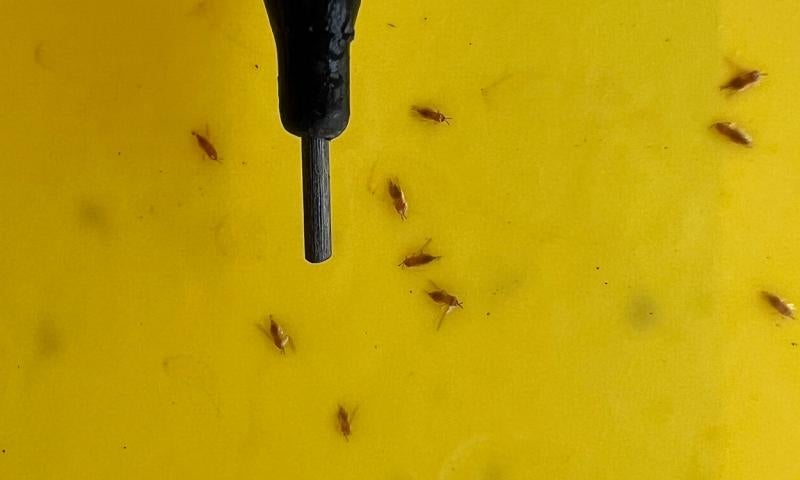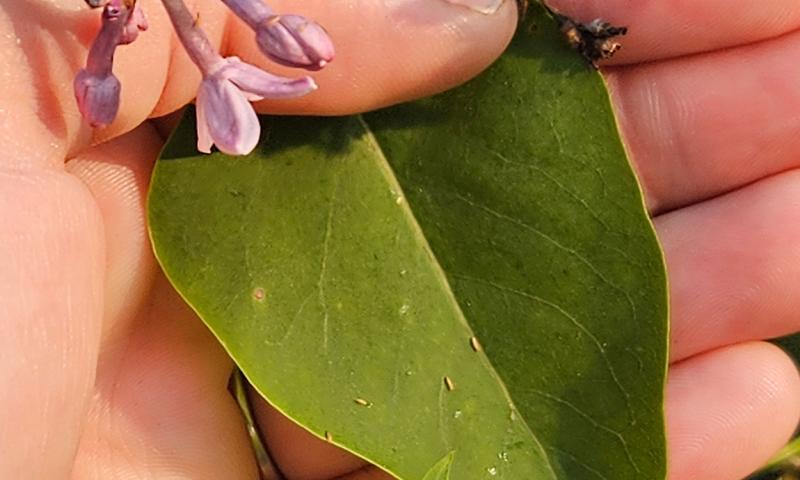Originally Submitted: May 25, 2023
Southerly winds brought large numbers of western flower thrips to the eastern third of South Dakota over the past week. Western flower thrips are very small insects that, as their name suggests, enjoy visiting and feeding on flowers.
About Western Flower Thrips
Thrips are some of the smallest insects, and this species tops out at 1 millimeter in length as an adult. As such, they are much easier to see with a hand lens, but they are visible to the naked eye (Figure 1).

They are small, slender, light-green insects and have wings as adults, but their wings are more like very small feathers than the more-common membranous wings that people associate with insects.
Lifecycle
The Western flower thrips that arrived here are adults, but they will soon produce eggs and additional generations. The lifecycle from egg to adult can be as fast as 2 weeks if the temperatures are in the mid 80s. The nymphs and adults feed by rasping, or scraping the plant tissue and then feeding on the sap. This feeding can cause leaf and fruit deformities, especially as the plant grows.
Thrips can also vector some plant viruses, including impatiens necrotic spot virus (abbreviated as INSV) and tomato spotted wilt virus (abbreviated as TSWV).
Management
The best management in greenhouses is prevention, including screening entrances/vents, monitoring activity with yellow sticky card traps, and checking incoming plants for signs and symptoms of thrips or their vectored diseases. Predatory mites will also consume thrips and can help keep infestations under control.
There are pesticides labeled for western flower thrips in greenhouses, but they should be part of an overall integrated pest management approach. In orchards, Conserve (spinosad) is labelled for these thrips. Always read and follow label directions for applications.
Western flower thrips can be pests in greenhouse situations, as well as outside in orchards and other garden plants.

Pesticide applications are not recommended for backyard infestations on flowering plants like lilacs (Figure 2), especially when they are blooming, as these applications can harm pollinators.
Natural enemies, like ladybugs and lacewings, may already be present and will also help to keep thrips populations in check.
Thrips can cause minor skin irritation, so those in areas with large thrips populations should wear long sleeves and long pants when in the field or greenhouse. Thrips do not bite people, and insect repellents are not generally used against them.
References
- Western flower thrips, management and Tospovirus. UMass Extension. Accessed May 25, 2023.
- Western Flower Thrips. Utah State University. Accessed May 24, 2023.
- Western Flower Thrips. WSU Tree Fruit. Accessed May 24, 2023.


